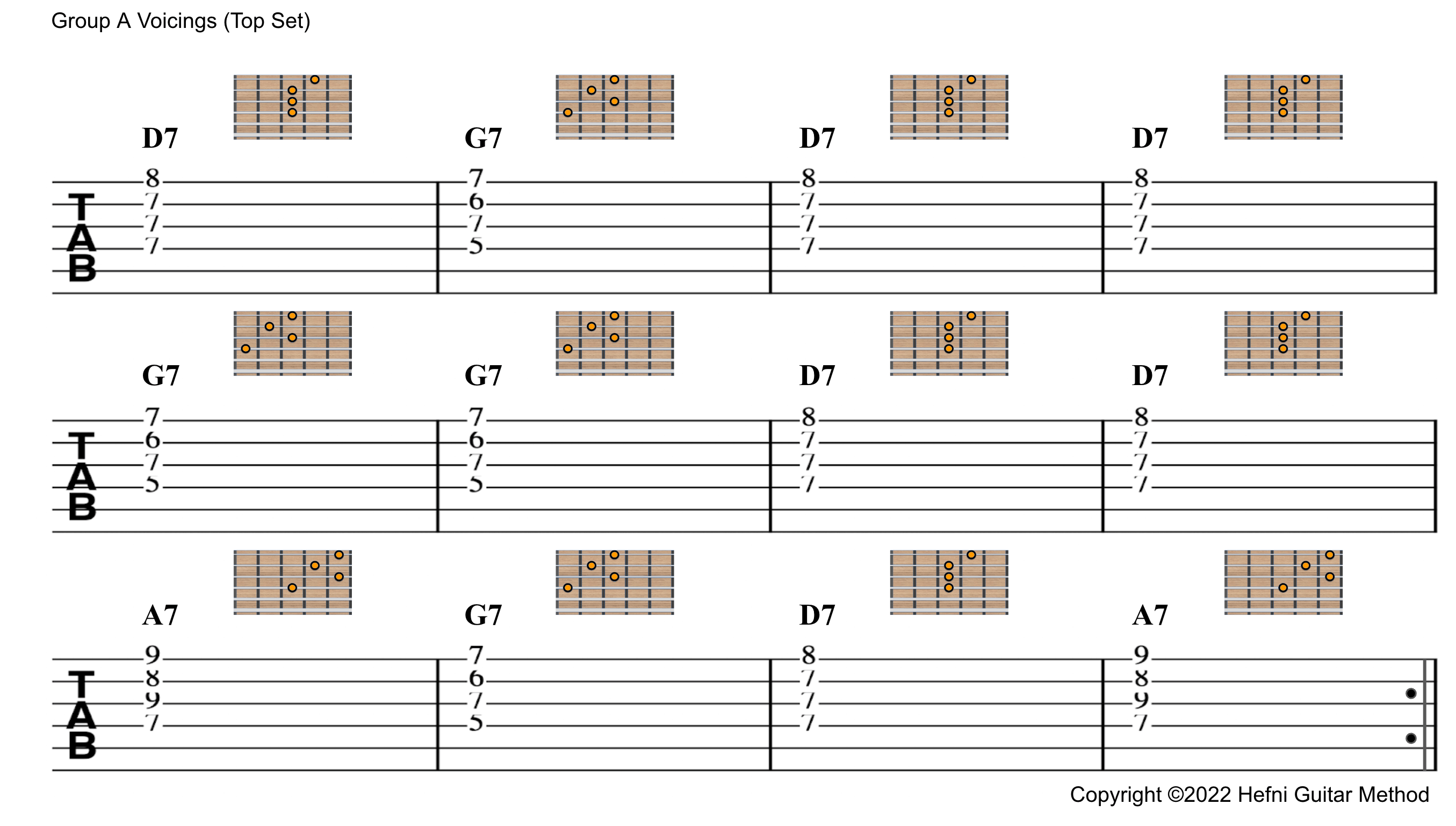Welcome to the Blues Chords Workshop Lesson 5.
We have completed the 4 voicing groups in the middle strings and are now ready to embark on the top string voicings. This lesson introduces the first voicing group between the 5th and 9th frets. Let us call this the top structure of Group A Voicings for Blues.
Click on the video below to watch the lesson.
Learning Aids
The TABs and chord diagrams for the Lesson 5 are presented below.

Primary Takeaways from Blues Chords Workshop Lesson 5
The main takeaways of lesson 2 are as follows:
1. Top String Voicings Are Thinner Sounding
Obviously, higher strings on guitar are thinner in diameter and produce higher pitched sounds compared to the lower strings. This allows us to play higher notes and therefore chords played on the top strings do sound ‘thinner’. As such, you can get away with playing the 5th in the chord on the top string voicings without it getting ‘muddy’. If we play the voicings on the middle- or low strings, we might find that the chords may sound too thick particularly if there is a lot of other instrumentation present. This may require omitting less essential notes such as the 5th or even the root note to thin out our chords. The resulting notes are what we call the shell voicings or even just the ‘guide tones’.
Clearly you should comp with top voicings when the soloist is playing in the lower register so as to avoid clashing frequencies. But generally, you can play the full voicing including the 5th when playing the chords on the top strings.
2. Common Finger Technique Still Applies
Although the chord voicings are on the top strings now, the common finger techniques still applies. Therefore whenever there are fixed- and movable-pivots, use those approaches as much as possible to make your changes more efficient.
Tips for Better Learning
Always Recap Previous Lessons
We should remember that the goal is to amass knowledge and skill on the guitar in order to build proficiency in whatever areas we desire. Therefore, with whatever new knowledge we acquire, we should not discard what was learnt previously. Even if we prefer the new topics or find that previous lesson may not be as practical, we should always find new ways to apply what was learnt before. This will expand our skills and open new doors for our learning and insight.
Another purpose of lesson recap is to help with long term memorisation. We remember things for longer when we revisit the lesson particularly after we have forgotten it. Many learners are not aware of this fact that we must forget in order to remember. When we restudy what we have forgotten, this will reactivate our short term memory and eventually store the knowledge in our long term memory after which we will retain that knowledge permanently.
